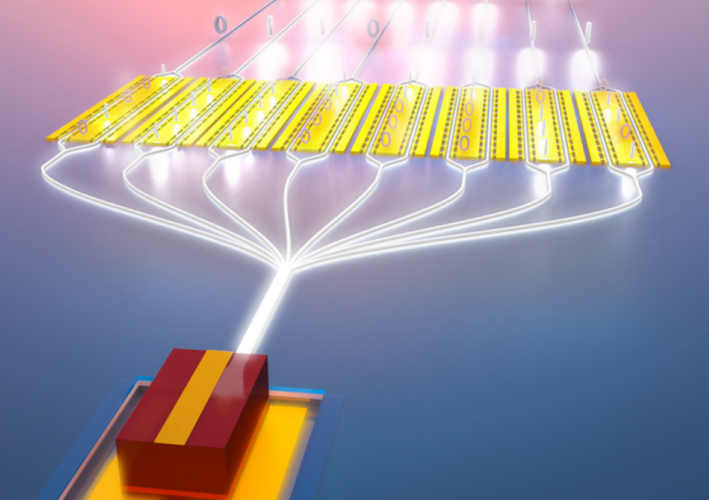Laser focusses on lithium niobate chip
Researchers have developed the first fully integrated high-power laser on a lithium niobate chip, an advance that could lead to less expensive, more stable and scalable optical carriers used in data transmission.

The development from the Harvard John A. Paulson School of Engineering and Applied Sciences (SEAS), working with industry collaborators Freedom Photonics and HyperLight Corporation, is detailed in Optica.
MORE FROM ELECTRONICS & COMMUNICATIONS
“Integrated lithium niobate photonics is a promising platform for the development of high-performance chip-scale optical systems, but getting a laser onto a lithium niobate chip has proved to be one of the biggest design challenges,” said Marko Loncar, the Tiantsai Lin Professor of Electrical Engineering and Applied Physics at SEAS and senior author of the study. “In this research, we used all the nano-fabrication tricks and techniques learned from previous developments in integrated lithium niobate photonics to overcome those challenges and achieve the goal of integrating a high-powered laser on a thin-film lithium niobate platform.”
Register now to continue reading
Thanks for visiting The Engineer. You’ve now reached your monthly limit of news stories. Register for free to unlock unlimited access to all of our news coverage, as well as premium content including opinion, in-depth features and special reports.
Benefits of registering
-
In-depth insights and coverage of key emerging trends
-
Unrestricted access to special reports throughout the year
-
Daily technology news delivered straight to your inbox










UK Enters ‘Golden Age of Nuclear’
The delay (nearly 8 years) in getting approval for the Rolls-Royce SMR is most worrying. Signifies a torpid and expensive system that is quite onerous...